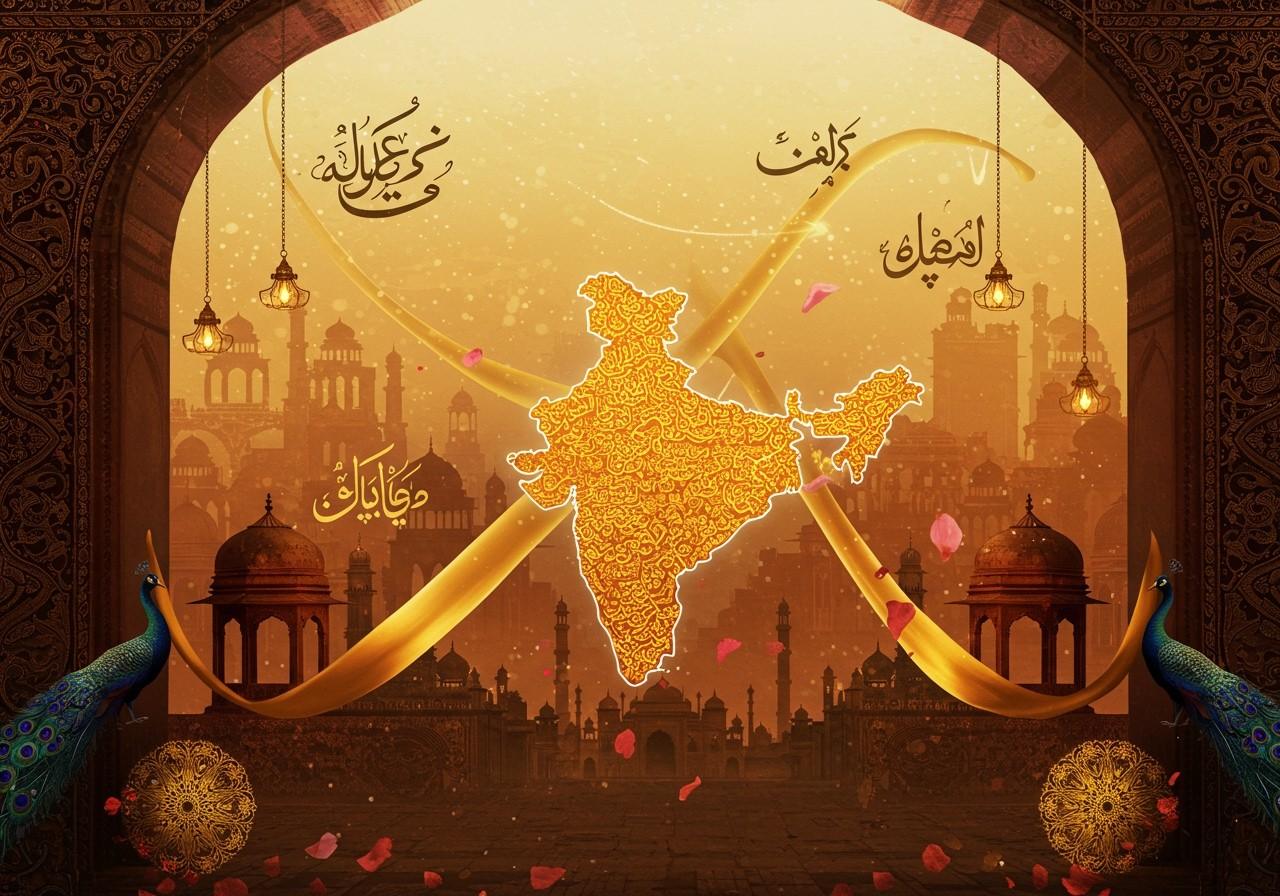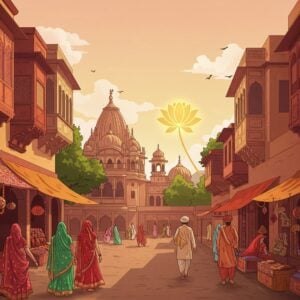
The Urdu language, a harmonious blend of history, culture, and geography, boasts a rich and intricate heritage that shapes its current global distribution. Embark on a journey to discover the origins of Urdu, its prominent presence in India, and the regions where it holds substantial cultural significance. Delve into the evolution of this language over centuries and its contemporary relevance among culturally rooted Indians.
The Genesis of Urdu
Urdu’s historical roots are intertwined with the socio-political landscape of the Indian subcontinent. It blossomed from the fusion of Turkish, Persian, Arabic, and local dialects during the Mughal Empire. The term ‘Urdu,’ signifying ‘camp’ or ‘army’ in Turkish, reflects its emergence as a common language in military settings. Sufi poets and scholars played a pivotal role in molding Urdu. Over time, its script, derived from the Persian-Arabic script, adapted to the phonetics of South Asian languages.
The Global Footprint of Urdu
Urdu’s influence extends far beyond its historical origins. In Pakistan, it holds the prestigious title of the national language, serving as a unifying force for diverse ethnic groups. It acts as the cultural thread weaving the nation together, despite being a first language for only a minority.
In India, Urdu’s presence is equally profound. As one of the 22 scheduled languages, it thrives in northern states such as Uttar Pradesh, Bihar, and Telangana, significantly shaping local culture and communication. It also has a presence in Andhra Pradesh, Maharashtra, and other regions.
Urdu’s journey transcends national borders. It resonates within communities in Bangladesh and Nepal, connected by shared history. The South Asian diaspora has carried Urdu to distant shores, establishing vibrant communities in the United Arab Emirates, Saudi Arabia, the United Kingdom, the United States, Canada, and even Afghanistan. These communities actively cultivate their linguistic heritage through cultural organizations and institutions, ensuring the language’s continued vitality.
Poojn.in: Championing Cultural Preservation Through Language
At Poojn.in, we recognize the profound connection between language, culture, and religious practices. We understand that while Urdu is spoken across diverse regions, many traditional items used in religious ceremonies retain Urdu names and descriptions. To cater to our diverse clientele, we provide authentic puja items with detailed descriptions in multiple languages, including Urdu.
For instance, our Aguru (اگرو in Urdu) products feature multilingual descriptions, enabling Urdu-speaking customers to readily identify and understand the significance of these sacred items. Our platform facilitates access to traditional puja items for communities across various linguistic regions, including those where Urdu is predominantly spoken.
Products Available for Urdu-Speaking Communities:
- Aguru/Agarwood sticks: Perfect for religious ceremonies and personal use. We offer a variety of sizes and grades to meet your specific needs. Explore our Agarwood collection.
- Prayer items with Urdu descriptions: From prayer beads to incense holders, find everything you need for your daily prayers, with clear explanations in Urdu. Discover our prayer items.
- Traditional incense and dhoop: Enhance your spiritual practices with our fragrant incense and dhoop, available with multilingual packaging for easy understanding. Browse our incense and dhoop selection.
- Religious texts: Deepen your understanding of religious scriptures with our selection of translated texts. Learn more about religious literature.
Visit Poojn.in today to explore our complete range of authentic puja items with multilingual support. Our customer service team is proficient in multiple languages, ensuring a seamless shopping experience for all.
The Enduring Heritage of Urdu
Urdu’s journey stands as a testament to its resilience and adaptability. It serves as a bridge between communities, connecting the past with the present, tradition with modernity. As Urdu speakers traverse the globe, they carry a piece of their heritage, fostering a sense of belonging wherever they go. From the bustling metropolises of South Asia to vibrant communities abroad, Urdu continues to flourish and inspire. Its story, interwoven through generations, remains a vibrant thread in our cultural tapestry, promising to endure for generations to come.
Frequently Asked Questions About Urdu
Where did Urdu originate? Urdu originated in the Indian subcontinent during the Mughal era, evolving from a blend of Persian, Arabic, Turkish, and local Indian languages.
Where is Urdu spoken today? Urdu is primarily spoken in Pakistan and India, with significant communities also found in the Middle East, the United States, the United Kingdom, Canada, and other parts of the South Asian diaspora.
Why is Urdu spoken in Pakistan? Urdu serves as the national language of Pakistan, uniting the country’s diverse linguistic groups.
Where is Urdu spoken in India? In India, Urdu is spoken in states like Uttar Pradesh, Bihar, Telangana, Andhra Pradesh, Maharashtra, and others. It holds official language status in certain regions.
How did Urdu gain prominence in India? Urdu rose to prominence during the Mughal Empire, where it was used in poetry, literature, and administration.
Is Urdu similar to Hindi? Yes, Urdu and Hindi share many similarities in their spoken forms. However, they differ in script and vocabulary due to their distinct influences. Urdu uses a modified Perso-Arabic script, while Hindi uses Devanagari.
Why is Urdu culturally important? Urdu holds immense cultural significance due to its rich literary tradition, encompassing poetry and prose that reflect the history and culture of South Asia. It is a language deeply connected to cultural identity and expression.
What role does Urdu play in education? Urdu is a medium of instruction in schools in Pakistan. In India, it is taught in schools and colleges, particularly in regions with substantial Urdu-speaking populations.


